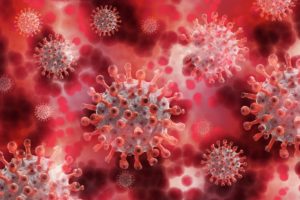
Introduction: New NIH Study
A new study reported recently by the National Institutes of Health (NIH) researchers can change the way we think about the desire to eat fatty and sugary foods and exercise. These foods are known to cause dopamine release and be part of what we call eating for pleasure or hedonic eating [1].
These NIH scientists have discovered a gene in mice that controls the craving for fatty and sugary foods and the desire to exercise [2]. This is a somewhat surprising finding. But, the gene, Prkar2a, is now critical in obesity research. Prkar2a is highly concentrated in the habenula, a very tiny brain region involved in responses to pain, stress, anxiety, sleep, and reward [3].
The findings will stimulate new research related to the drive to eat sugar and fatty foods and inform future research to prevent obesity. The new study was conducted by Dr. Edra London, an intramural NIH staff scientist in the section on endocrinology and genetics.
The gene Prkar2a contains the information needed to make two molecular components of the enzyme protein kinase A. Enzymes speed up chemical reactions, either helping to combine smaller molecules into larger molecules or to break down larger molecules into smaller ones.
Protein kinase A is the central enzyme that speeds reactions inside cells in many species. In a previous study, the NICHD team found that despite being fed a high-fat diet, mice lacking functioning copies of Prkar2a were less likely to become obese than wild type mice with normally functioning Prkar2a.
The researchers determined that Prkar2a-negative mice ate less high-fat food than their counterparts, not only when given unlimited access to the food but also after a fast. Similarly, the Prkar2a negative mice also drank less of a sugar solution than the wild type mice.
Female Prkar2a-negative mice were less inclined to consume high-fat foods than Prkar2-negative males, while Prkar2-negative males showed less sugar solution preference than Prkar2-negative females. Many experts, including Dr. Nicole Avena, have suggested that overeating and obesity are due to food that stimulates its taking as a drug of abuse.
Producing mood, energy, and drug-like effects mean that just eating sugary or fatty foods makes it more likely you will eat more, look for, and crave them. Sugary and fatty comfort foods, hedonic eating increased during the pandemic.
Globeisty and the Coronavirus
When we think about a pandemic, we focus on COVID-19. But, pandemic obesity and childhood obesity have increased as well. Eating beyond physiological needs contributes to obesity onset.
 Measuring this behavior could help identify those at risk for weight gain. This study measured eating in the absence of hunger (EAH) and its relationship with weight change and self-report measures related to appetite and eating behavior [4].
Measuring this behavior could help identify those at risk for weight gain. This study measured eating in the absence of hunger (EAH) and its relationship with weight change and self-report measures related to appetite and eating behavior [4].
When schools closed in March this year and with many children in fully remote learning situations this fall, World Health and other child health experts are worried that access to comfort foods, fatty and sugary foods, will exacerbate overeating. Many parents report that their children have been eating and gaining weight through the lockdowns and homeschooling.
Loss of in-school structure, meals, and activities let nature and the most reinforcing foods and activities dominate the child’s day. Gaming, social media, couch-related living with junk foods have taken over.
When schools are closed, kids miss out on school structure and don’t access a range of activities and services like hot meals, physical and mental health check-ins, and exercise. Peers also comment on their mood, weight, and appearance. Think of the COVID-19 pandemic and the child’s daily activities as somewhat more like summer than the school year.
In a paper published earlier this year, we learned that children in the U.S. eat fewer vegetables and more added sugar during the summer. However, they also were more active and watched more television as well. Another study found that children’s body mass index (BMI) percentile decreased overall by 1.5 percent during the school year and increased by 5.2 percent during the summer.
Children from marginalized communities may stand to lose even more if their families cannot afford to provide healthy meals and do not have the time or resources to find exercise opportunities. A recent report from the Robert Wood Johnson Foundation (RWJF) states [5] that nationally, 15.5 percent of children 10 to 17 years old have obesity.
“The disproportionate impact of COVID-19 on families furthest from economic opportunity, people of color, and people with obesity should heighten awareness of the need for more equitable policies and more investment in prevention [6]. Signs and symptoms of emotional disturbances increase the risk of obesity, reward-based eating, and hedonic hunger. Depression, anxiety, and reward deficiency are associated with unhealthy eating and weight [7]; among adolescents.
Eating More Sugary and Fatty Foods Usually Means Sit More and Exercise Less
These changes related to COVID-19 and studies of child behavior changes in the summer emphasize the new NIH study’s importance. The default mode is to seek pleasure and avoid pain. Food-derived pleasure would come from sugary and fatty foods.
Palatable food can be seductive, and hedonic eating can become irresistible beyond hunger and negative consequences. In recent years, our group has looked at all the known factors undermining homeostatic eating and biasing us toward hedonic eating addiction-like feeding behavior and obesity.
Across multiple tests, females consistently consumed similar amounts of palatable food regardless of whether they were hungry or sated. In contrast, males typically adjusted their consumption according to their hunger/satiety state. Orexin ( ORX) is vital in food motivation and the neuronal mechanisms of hedonic eating [8].
 In a recent study, systemic blockade of ORX receptor 1 signaling with an experimental medication, SB-334867, decreased palatable food consumption in hungry and sated rats of both sexes. These new results confirm sex differences in hedonic eating, increased susceptibility in females to overeat palatable food regardless of hunger state, and that ORX is a critical neuropeptide mechanism of hedonic eating.
In a recent study, systemic blockade of ORX receptor 1 signaling with an experimental medication, SB-334867, decreased palatable food consumption in hungry and sated rats of both sexes. These new results confirm sex differences in hedonic eating, increased susceptibility in females to overeat palatable food regardless of hunger state, and that ORX is a critical neuropeptide mechanism of hedonic eating.
Male vs. Female differences also appear in the exercise literature. Overeating and prolonged intake of highly palatable, high fat (H.F.) foods is a key cause of obesity, metabolic syndrome, and cognitive impairment. Exercise can restore energy homeostasis and suppress H.F. diet preference.
But, while exercise can and does help, it is more effective at attenuating HF-associated metabolic deficits in males. Again, when it comes to eating and eating disorders, it is very important to develop gender-specific treatment interventions [9].
The lateral hypothalamus is the neural substrate able to confront food-associated homeostatic information with food salience, motivation to eat, reward-seeking, and development of compulsive eating. Thus, the lateral hypothalamus-ventral tegmental area-nucleus accumbens neural circuitry is reexamined to interrogate the functional interplay between ghrelin and dopamine orexin and endocannabinoid signaling.
Some have suggested a pivotal role for endocannabinoids in food reward processing within the lateral hypothalamus and for orexin neurons to integrate endocrine signals with food reinforcement and hedonic eating. But, type-1 cannabinoid receptor-dependent inhibition of GABA-ergic release and relapse to reward-associated stimuli is linked to ghrelin and orexin signaling in the lateral hypothalamus-ventral tegmental area-nucleus accumbens dopamine neurons network support fatty and sugary foods reinforcement of food addiction-like behavior [10].
Hopefully, Prkar2a and ORX studies will translate into new insights and treatments. Exercise vs. couch potato living may be related to these genes as well. As it is not just the food preferences that changed but also, the Prkar2a-negative mice were also more inclined to exercise.
Not only did they exercise more and seemed to enjoy exercising, but they were also running up to 3 times longer than wild type mice on a treadmill. Patients with Anorexia Nervosa appear to get less pleasure from eating, do not have the same hunger cue and cravings, and may eat less while they may want to exercise more.
This may be mediated by genes or be part of mood self-care. Exercise is a reinforcing behavior, and finding an activity and positively reinforcing it is characteristic of habitual exercisers. Genotypes related to dopamine metabolism moderate the reinforcing value of actions, but genetic moderators of exercise reinforcement have not been established [11].
The literature regarding exercise for people with depression is clear but less so for those with anxiety disorders. A recent meta-analysis shows the broader benefits of exercise on wellbeing and cardiovascular health. These findings reinforce exercise as an essential treatment option in people with anxiety/stress and eating disorders [12].
Some clinicians have suggested bed rest to motivate eating in patients with AN, and others have worried about E.D. patients over-exercising. In a recent review, 11 core themes describing techniques that have successfully used exercise therapeutically in E.D. treatment [13].
These 11 guidelines they provided for safe exercising in ED patients include:
- Employ a team of relevant experts
- Monitor medical status
- Screen for exercise-related psychopathology
- Create a written contract of how therapeutic exercise will be used
- Include a psychoeducational component
- Focus on positive reinforcement
- Create a graded exercise program
- Begin with mild-intensity training
- Tailor the mode of exercise to the needs of the individual
- Include a nutritional component
- Debrief after exercise sessions
Anorexia Nervosa Can Be Deadly But Fats May Prevent Death
We live in a time with food abundance and where cases of obesity outnumber starvation. With so many types of food available, it is interesting to think about foods that are binge foods and triggers. Is it fish or meat or vegetables?
 According to Nicole Avena and Ashley Gearhardt [14], not all foods are equally implicated in addictive-like eating behavior. Fatty, sugary, and highly processed foods, which may share characteristics with drugs of abuse (e.g., high dose, rapid rate of absorption), appear to be particularly associated with loss of control, eating more than you intended, or “food addiction.”
According to Nicole Avena and Ashley Gearhardt [14], not all foods are equally implicated in addictive-like eating behavior. Fatty, sugary, and highly processed foods, which may share characteristics with drugs of abuse (e.g., high dose, rapid rate of absorption), appear to be particularly associated with loss of control, eating more than you intended, or “food addiction.”
Topping the list of binge foods were pizza, chocolate, chips, cookies, ice cream, French fries, cake, and soda, all considered processed foods. They were followed by cheese and bacon — both unprocessed foods but high in fat and salt.
Obese women, Obese women with binge eating disorder, and those without BED consumed more ice cream, cake, and potato chips during a “binge” meal when advised to “eat as much as you like.” Clearly, these are the types of food items that people tend to overindulge in when given the opportunity.
Another study analyzing the food content of binge episodes among women with bulimia nervosa also found that binge meals include more snack and dessert items. These foods are so consistently compelling; it is remarkable that patients with Anorexia Nervosa are the exception to this rule.
AN patients first exert control over these foods by diet but fail. Or, to prevent failure, they gain control over all the food impulses, drives, and hedonic eating in our environment.
Anorexia nervosa, estimated to affect 1% of adolescent females in the U.S., represents a severe psychiatric illness associated with food avoidance and malnutrition. AN has one of the highest death rates of any mental health condition.
Causes of death are related to starvation, cardiovascular disease, and a high rate of suicide completion. 20% of patients with AN die from suicide. Anorexia nervosa has the most increased mortality (death) rate of any mental disorder [15].
Patients starve themselves by not eating. People with anorexia may die from medical conditions and complications associated with starvation. By comparison, people with other eating disorders die of suicide.
AN is associated with a premature death rate that is more than 20 times higher than their peers who don’t have an eating disorder. In patients suffering from anorexia nervosa, cardiovascular complications are important and related to morbidity and mortality [16].
Cardiovascular assessments should be done many times over the course of the illness, looking at heart rate variability, blood pressure variability, and cardiovascular reflex control. Re-feeding, eating, and rehydration are treatments of choice for AN. It is easier to give patients and their families advice than it is for them to follow.
Many hormones, genes, and brain messengers are being studied for clues using animal models and patients with Anorexia Nervosa as volunteers. Females with AN have higher appetite-regulating ghrelin and peptide Y.Y. (PYY) and lower brain-derived neurotropic factor (BDNF) levels than controls and differ in their hedonic appetite and perception of hunger cues [17].
A recent study using Visual Analog Scales (VAS) assessed prospective food consumption, hunger, satiety, and hedonic cravings were administered before and 20 min after breakfast. A Cookie Taste Test (CTT) was conducted after a snack to measure hedonic eating behavior ∼three h after breakfast.
This CTT separates all of the other study participants from those with AN. AN consumed fewer calories during the CTT vs. controls (p < 0.0001). In young females with AN, reductions in BDNF are associated with reduced hedonic food intake.
Without food being fun and reinforcing or being the opposite of fun, eating suffers. Palatable taste can stimulate appetite in the absence of hunger, and individual differences in hedonic eating may be critical to overeating.
Women are more prone to obesity and binge eating than men, which warrants comparisons of hedonic versus physiological consumption and the underlying neural substrates in both sexes. Patients with AN appear to have an answer to the globesity epidemic that has gone way too far.
 This has remained a mystery and remarkable in a time with so many food cues, triggers, and highly dense reinforcing foods to eat. AN is a brain disease that reinforces eating and monitors nutrients and hunger to drive the food search.
This has remained a mystery and remarkable in a time with so many food cues, triggers, and highly dense reinforcing foods to eat. AN is a brain disease that reinforces eating and monitors nutrients and hunger to drive the food search.
Eating is key to survival and is determined by numerous brain systems, pathways, hormones, and messengers. Many converge in the hypothalamus, and most research has focused on that area of the brain.
Hypothalamic agouti-related peptide (AgRP) and neuropeptide Y-expressing neurons have a critical role in driving food intake and modulating complex, non-feeding behaviors. Horvath’s Yale group recently [18] looked at whether AgRP neurons are relevant to the emergence of anorexia nervosa symptomatology in a mouse model.
Animals with impaired AgRP neuronal circuits cannot properly mobilize fuels during food-restriction-associated exercise. However, their death is wholly prevented when provided with high-fat content through diet.
High-fat content in the diet also contains the long-term behavioral impact of food-restricted fit mice with elevated exercise volume. These observations elucidate a previously unsuspected organizational role of AgRP neurons, via the periphery mediation, in the regulation of compulsive exercise and its related lethality with possible implications for psychiatric conditions, such as anorexia nervosa.
The researchers found that there was a profound and direct relationship between the workings of these neurons and the likelihood of death. The Yale researchers reported that all animals on a food-restricted diet but with a high-exercise program who had their AgRP neurons inhibited died within three days.
Fat, Rehydration, and Refeeding
“If we diminished these neurons in animals who ate little and exercised compulsively, they died,” said Horvath [19], who is also chair of the Department of Comparative Medicine and director of the Yale Program in Integrative Cell Signaling and Neurobiology of Metabolism. Lowering levels of these neurons proved fatal, Horvath said, because they are needed to help the body access alternative forms of fuel — namely fat — in the absence of eating, combined with intense exercise.
“If these neurons don’t function, you are not able to mobilize fuels from fat stores,” he said. But when they provided fatty food to the mice with decreased AgRP activity, they found that “death [was] completely prevented.” This finding could suggest a new tactic for treating anorexia in people, Horvath said.
 “If you are a person dying from anorexia and eat foods containing elevated fat, you may survive,” he said. Yale researchers are extending their research to identify which fats may help prevent anorexia from becoming lethal.
“If you are a person dying from anorexia and eat foods containing elevated fat, you may survive,” he said. Yale researchers are extending their research to identify which fats may help prevent anorexia from becoming lethal.
These Horvath and Yale data suggest an important intervention, which could be applied before the need for hospitalization and intensive medical care. They are also consistent with changes recently recommended for in-hospital medical treatment of patients with eating disorders that challenge the old standard of care.
The old standard of hospital care has been to evaluate and treat AN patients for malnutrition by starting a low-calorie feeding plan and bump up calories slowly. But a new study clearly shows that patients get well faster with the opposite approach: providing more calories and increasing them quickly [20].
This study was the largest randomized clinical trial to examine refeeding approaches to AN. Of the 111 patients who completed the study, 51 adolescents and young adults consumed 1,400 calories on day one, with increases of 200 calories every other day. In the second group, 60 adolescents and young adults consumed 2,000 calories on day one, with increases of 200 calories each day.
In both groups, any uneaten food was replaced by a calorie-equivalent quantity of high-energy liquid formula. The researchers found that medical complications that had prompted their admissions, such as low blood pressure and bradycardia, or slow or irregular heart rhythm, were more quickly restored in the higher-calorie group, resulting in shorter, less expensive hospitalizations.
References:
1. https://blog.oup.com/2015/02/palatable-food-eating-disorders/
2. London, E et al.
Loss of habenular Prkar2a reduces hedonic eating and increases exercise motivation. JCI Insight. 2020.
3. https://www.nichd.nih.gov/newsroom/news/110520-eating-exercise-gene
4. Feig EH, Piers AD, Kral TVE, Lowe MR. Eating in the absence of hunger is related to loss-of-control eating, hedonic hunger, and short-term weight gain in normal-weight women. Appetite. 2018 Apr 1;123:317-324. doi: 10.1016/j.appet.2018.01.013. Epub 2018 Jan 10. PMID: 29331366.
5. https://media.stateofobesity.org/wp-content/uploads/2020/10/13205332/State-of-Childhood-Obesity-10-14-20-Final-WEB.pdf
6. https://stateofchildhoodobesity.org/policy-recommendations/
7. Mason TB, Dunton GF, Gearhardt AN, Leventhal AM. Emotional disorder symptoms, anhedonia, and negative urgency as predictors of hedonic hunger in adolescents. Eat Behav. 2020 Jan;36:101343. doi: 10.1016/j.eatbeh.2019.101343. Epub 2019 Nov 7. PMID: 31715461; PMCID: PMC7044051.
8. Buczek L, Migliaccio J, Petrovich GD. Hedonic Eating: Sex Differences and Characterization of Orexin Activation and Signaling. Neuroscience. 2020 Jun 1;436:34-45. doi: 10.1016/j.neuroscience.2020.04.008. Epub 2020 Apr 10. PMID: 32283183; PMCID: PMC7225042.
9. Yang TY, Gao Z, Liang NC. Sex-Dependent Wheel Running Effects on High Fat Diet Preference, Metabolic Outcomes, and Performance on the Barnes Maze in Rats. Nutrients. 2020 Sep 5;12(9):2721. doi: 10.3390/nu12092721. PMID: 32899519; PMCID: PMC7551623.
10. Coccurello R, Maccarrone M. Hedonic Eating and the “Delicious Circle”: From Lipid-Derived Mediators to Brain Dopamine and Back. Front Neurosci. 2018 Apr 24;12:271. doi: 10.3389/fnins.2018.00271. PMID: 29740277; PMCID: PMC5928395.
11. Flack K, Pankey C, Ufholz K, Johnson L, Roemmich JN. Genetic variations in the dopamine reward system influence exercise reinforcement and tolerance for exercise intensity. Behav Brain Res. 2019 Dec 16;375:112148. doi: 10.1016/j.bbr.2019.112148. Epub 2019 Aug 9. PMID: 31404557.
12. Stubbs B, Vancampfort D, Rosenbaum S, Firth J, Cosco T, Veronese N, Salum GA, Schuch FB. An examination of the anxiolytic effects of exercise for people with anxiety and stress-related disorders: A meta-analysis. Psychiatry Res. 2017 Mar;249:102-108. doi: 10.1016/j.psychres.2016.12.020. Epub 2017 Jan 6. PMID: 28088704.
13. Cook BJ, Wonderlich SA, Mitchell JE, Thompson R, Sherman R, McCallum K. Exercise in Eating Disorders Treatment: Systematic Review and Proposal of Guidelines. Med Sci Sports Exerc. 2016 Jul;48(7):1408-14. doi: 10.1249/MSS.0000000000000912. PMID: 26909533; PMCID: PMC4911228.
14. https://www.cnn.com/2015/10/23/health/pizza-and-other-foods-addicting/index.html
15. https://www.nimh.nih.gov/health/publications/eating-disorders/index.shtml
16. Sekaninova N, Bona Olexova L, Visnovcova Z, Ondrejka I, Tonhajzerova I. Role of Neuroendocrine, Immune, and Autonomic Nervous System in Anorexia Nervosa-Linked Cardiovascular Diseases. Int J Mol Sci. 2020 Oct 2;21(19):7302. doi: 10.3390/ijms21197302. PMID: 33023273; PMCID: PMC7582625.
17. Mancuso C, Izquierdo A, Slattery M, Becker KR, Plessow F, Thomas JJ, Eddy KT, Lawson EA, Misra M. Changes in appetite-regulating hormones following food intake are associated with changes in reported appetite and a measure of hedonic eating in girls and young women with anorexia nervosa. Psychoneuroendocrinology. 2020 Mar;113:104556. doi: 10.1016/j.psyneuen.2019.104556. Epub 2019 Dec 23. PMID: 31918391; PMCID: PMC7080573.
18. Miletta, M.C., Iyilikci, O., Shanabrough, M. et al. AgRP neurons control compulsive exercise and survival in an activity-based anorexia model. Nat Metab 2, 1204–1211 (2020). https://doi.org/10.1038/s42255-020-00300-8
19. https://news.yale.edu/2020/10/28/yale-finds-neuron-behind-fatal-anorexia-and-solution-high-fat-diet
20. https://www.ucsf.edu/news/2020/10/418836/higher-calorie-diets-patients-anorexia-nervosa-shorten-hospital-stays
About the Author:
 Mark S. Gold, M.D., Professor, Washington University School of Medicine – Department of Psychiatry, served as Professor, the Donald Dizney Eminent Scholar, Distinguished Professor and Chair of Psychiatry from 1990-2014. He was the first Faculty from the College of Medicine to be selected as a University-wide Distinguished Alumni Professor and served as the 17th University of Florida’s Distinguished Alumni Professor.
Mark S. Gold, M.D., Professor, Washington University School of Medicine – Department of Psychiatry, served as Professor, the Donald Dizney Eminent Scholar, Distinguished Professor and Chair of Psychiatry from 1990-2014. He was the first Faculty from the College of Medicine to be selected as a University-wide Distinguished Alumni Professor and served as the 17th University of Florida’s Distinguished Alumni Professor.
Dr. Gold is also a Distinguished Fellow, American Society of Addiction Medicine; Distinguished Life Fellow, the American Psychiatric Association; Distinguished Fellow, American College of Clinical Pharmacology; Clinical Professor of Psychiatry, Tulane University School of Medicine; Professor( Adjunct), Washington University in St Louis, School of Medicine, Department of Psychiatry; National Council, Washington University in St Louis, Institute for Public Health
Learn more about Mark S. Gold, MD
The opinions and views of our guest contributors are shared to provide a broad perspective of addictions. These are not necessarily the views of Weight Hope, but an effort to offer a discussion of various issues by different concerned individuals.
We at Weight Hope understand that weight issues result from multiple physical, emotional, environmental and genetic factors. If you or a loved one are suffering from a weight concern, please know that there is hope for you.
Published on November 23, 2020. Published on WeightHope.com
Reviewed by Jacquelyn Ekern, MS, LPC on November 23, 2020
